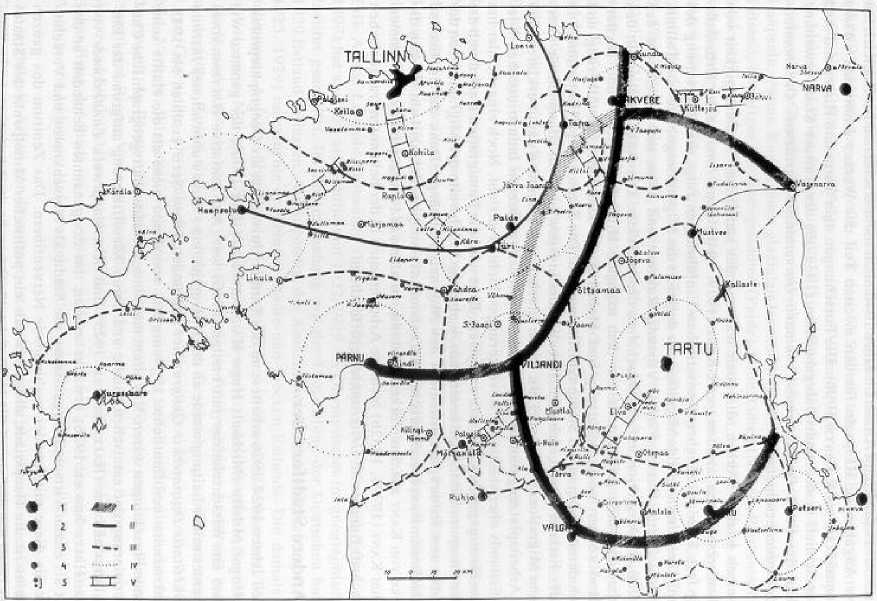city within the country at the beginning of 1930s (Kant 1935, 186- 187). He proposed the
following levels of central places:
1) Alevik (Kleinflecken), population less than 500 inh.,
2) Alev (Grosslfecken), 500-2000 inh.;
3) Maalinn (Landstadt), 2000-5000 inh.;
4) Vaikelinn (Kleinstadt), 5000-20 000 inh.;
5) Kesklinn (Mittelstadt), 20 000-50 000 inh.;
6) Taislinn (Vollstadt), 50 000-200 000 inh.;
7) Suurlinn (Grossstadt), 200 000-500 000 inh.;
8) Hiidlinn (Riesenstadt), 500 000-2 000 000 inh.;
9) Ülilinn (Überstadt), 2 000 000-5 000 000 inh.;
10) Maailmalinn (Weltstadt), more than 5 million inh.

Abb. 3: Die Système tier ZCntraIen Siedlungen Estlands. Enitvurf: Kant I93J⅛ Anmcrkungen vgl. S. 222
Figure 2. The system of central places in Estonia by Edgar Kant (1935).
More intriguing information
1. Standards behaviours face to innovation of the entrepreneurships of Beira Interior2. Restructuring of industrial economies in countries in transition: Experience of Ukraine
3. The name is absent
4. The name is absent
5. Transfer from primary school to secondary school
6. The name is absent
7. A dynamic approach to the tendency of industries to cluster
8. The name is absent
9. Globalization, Redistribution, and the Composition of Public Education Expenditures
10. DETERMINANTS OF FOOD AWAY FROM HOME AMONG AFRICAN-AMERICANS